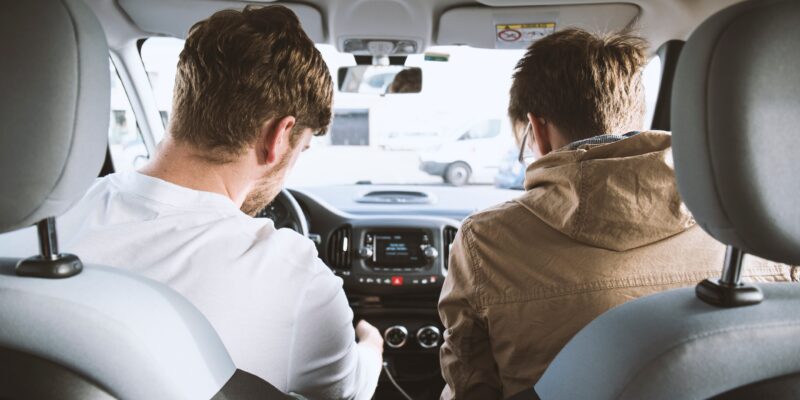Amplitude Modulation (AM) Radio Removed From Ford, Tesla, & BMW Models
Sports fanatics and talk show patrons have spent years switching on the AM function to tune in live to their favorite broadcasts. Despite the fuzzy signal and poor sound quality, this radio broadcasting frequency has remained a niche for dedicated listeners and a favorite among older drivers. However, recent news suggests that could all change. Automakers, such as Ford, Tesla, BMW, and Volvo no longer have plans to produce vehicles with amplitude modulation frequency. In fact, some automakers plan to erase it in its entirety.
Brief history of AM radio
AM (Amplitude Modulation) radio broadcasting began in the early 20th century. Here are key events that marked the evolution of AM radio, from its origins to present day:
- 1901: Reginald Fessenden, a Canadian inventor, made the first AM radio broadcast, transmitting speech and music from Brant Rock, Massachusetts.
- 1920: The first commercial AM radio station, KDKA, began broadcasting in Pittsburgh, Pennsylvania, on November 2, 1920. This marked the beginning of regular scheduled radio broadcasts.
- 1922: The Radio Act of 1922 was enacted in the United States, which established regulations for radio broadcasting and allocated frequencies to different stations. This act laid the foundation for the development of AM radio broadcasting.
- 1930s-1940s: The “Golden Age of Radio” took place, with AM radio becoming a prominent medium for entertainment, news, and information. It featured popular shows, such as dramas, comedies, variety shows, and news programs.
- 1945-1950s: The development of television posed a challenge to AM radio, as it offered a new visual medium for entertainment and news. However, AM radio remained popular for music and talk shows.
- 1960s-1970s: FM (Frequency Modulation) radio gained popularity for its superior sound quality, and many music stations switched to FM. This marked a shift in the radio landscape, although AM radio continued to serve a variety of purposes, including news, talk radio, and niche programming.
- 1980s-Present: The rise of digital media and the internet brought new challenges to AM radio. However, despite the decline in popularity, AM radio continues to have a presence, particularly for talk radio, sports broadcasting, and in some regions where FM coverage is limited.
 Why is amplitude modulation (AM) radio going away?
Why is amplitude modulation (AM) radio going away?
The popularity and relevance of AM radio have declined over the years, primarily due to several factors:
Technological advancements
With the advent of newer technologies such as FM radio, satellite radio, and streaming services, the appeal of AM radio has diminished. These alternatives offer better sound quality, a wider range of content, and more convenience for listeners.
Sound quality limitations
AM radio broadcasts are more susceptible to interference, static, and atmospheric conditions compared to FM radio. The limited audio quality can be a deterrent for listeners seeking a more immersive and enjoyable experience.
Changing consumer preferences
Over time, people’s preferences for consuming media have shifted. Many listeners now prefer on-demand content, personalized playlists, and digital platforms that offer a variety of options. AM radio, with its scheduled programming and limited content choices, may struggle to compete in this landscape.
Decline in advertising revenue
As audience numbers have dwindled, AM radio stations have faced challenges in generating advertising revenue. Advertisers often prefer platforms that can reach larger and more targeted audiences. This makes it harder for AM radio to attract advertisers and sustain their operations.
It’s worth mentioning that while AM radio has experienced a decline in popularity, there are still dedicated listeners, particularly in certain regions and niche markets. Some radio stations have adapted by focusing on specific programming genres, news, talk shows, or catering to a particular demographic to maintain their audience base. Additionally, in some emergency situations, AM radio’s ability to transmit over longer distances and provide vital information can still be valuable.
Not all is lost
Surprisingly, not all automakers are on the bandwagon. Reports show that Nissan, Toyota and Honda have taken a stance against AM radio being removed. These automakers see it as a valuable asset for live reporting, weather news, and real-time talk shows. Overall, it seems the AM versus no-AM debate will remain subjective to the automakers themselves.
What do you think of the removal of AM radio? Tell us your opinion below!















